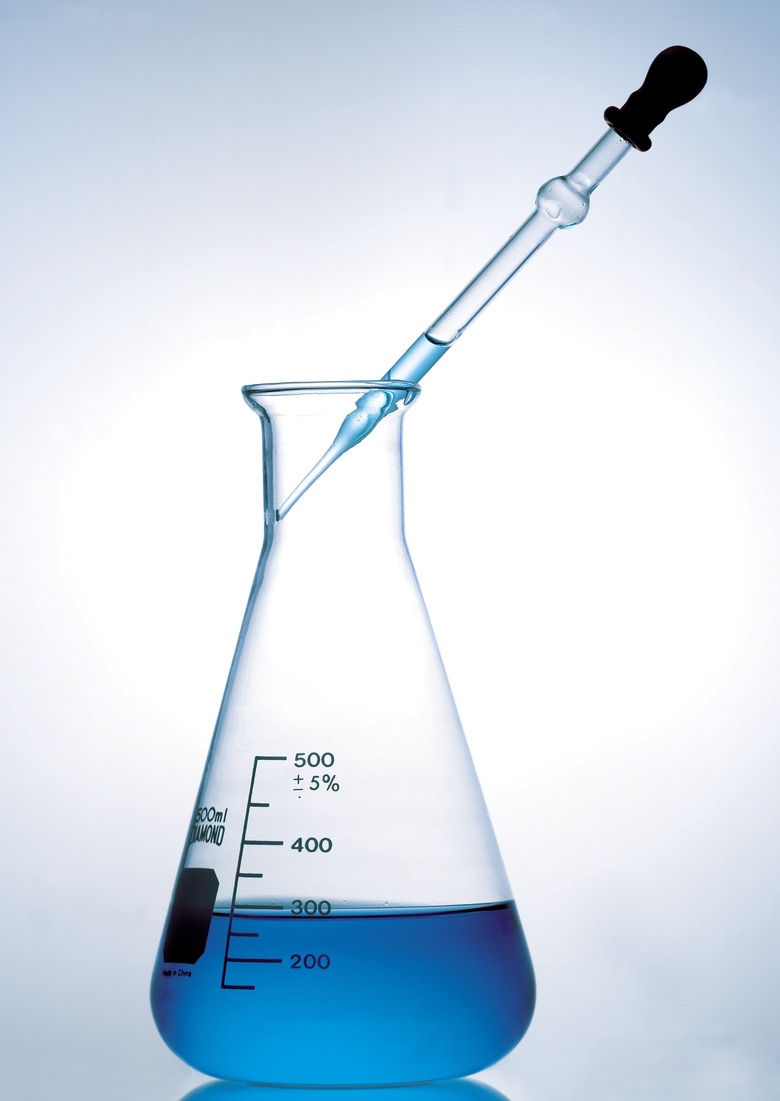What Is The Purpose Of A Pipette?
A pipette is a small tube that can transfer liquids from one container to another. Pipettes, or pipets, are common pieces of laboratory equipment.
Types of Pipettes
Types of Pipettes
Pipettes may be constructed out of glass or plastic and are used to transfer a measurable amount of liquid.
They are designed either to contain (TC) or to deliver (TD) a specific volume and will be stamped as such by the manufacturer. TC pipettes will contain a specified volume but will not dispense the exact volume, and TD will dispense the exact volume.
Volumetric Pipettes
Volumetric Pipettes
Volumetric pipettes transfer a single, predetermined volume of liquid. They are often called a bulb pipette for their shape, which is a long tube-like shaft at the bottom and top and a bulb in the center where the bulk of solution is held. The name is also indicative of the bulb that attaches to the top of the pipette, often made of rubber, which must be manually squeezed to create a vacuum.
As the rubber bulb begins to fill with air, a solution is drawn into the pipette. While seeming rudimentary, volumetric pipettes are extremely precise (up to four significant figures). They are limited to the particular amount calibrated and cannot be used to accurately measure liquid amounts less than their specified capacity.
Measuring Pipettes and Micropipettes
Measuring Pipettes and
Micropipettes
Measuring pipettes have graduated volumes, like a graduated cylinder, and can dispense different volumes. Measuring pipettes are calibrated with small divisions and are often adjustable, allowing users to accurately draw up the necessary amount of liquid.
Micropipettes are accurate and precise and can transfer measured volumes of microliters of volume. Micropipettes are spring-loaded instruments and require calibration every few months either from the manufacturer or by a process of weighing water at a known temperature.
Pasteur Pipette
Pasteur Pipette
Pasteur pipettes, named for Louis Pasteur, are similar to eye droppers and can transfer a small amount of liquid. They are made of glass or plastic, have a separate bulb and are not graduated for a certain volume.
Transfer pipettes
Transfer pipettes
Similar to Pasteur pipettes, they are made of plastic but molded, so the bulb may contain some of the liquid. Squeezing the bulb will create a vacuum and liquid may be drawn up.
Using and Cleaning Pipettes
Using and
Cleaning Pipettes
Regardless of the type of pipette, care and attention is needed. To prevent damage, especially to glass pipettes, hold them at a distance from the bottom of the container before drawing liquid.
When the required volume has been drawn up, gently tap the side of the pipette to remove excess droplets. Hold the pipette at a 10 to 45 degree angle when dispensing.
Pipettes require cleaning after every use to prevent contamination from any previous contents. For micropipettes, new plastic tips must be used each time.
History of Pipettes
History of Pipettes
Pipettes have existed since the 1700s when chemist Francois Descroizilles developed the alkalimeter, a precursor to the pipette. It looked similar to a graduated cylinder and was used to work with acid and base titrations (alkalimetry).
Gay-Lussac, the scientist who coined Charles Law, also coined the word pipette for his modified version.
The French biologist Louis Pasteur, who invented the pasteurization process, created Pasteur pipettes so samples could be transferred without contamination.
Little change was made to this basic laboratory tool until the 1950s. Mouth pipetting was the norm, where, instead of using a bulb at the top of the pipette, scientists used their mouths to draw or suck up the liquid. The process was ripe for contamination, as toxic chemicals could be pipetted — such as a physician in 1893 accidentally sucking a culture of typhoid bacilli into his mouth.
In the 1950s, Heinrich Schnitger, frustrated with trying to mouth-pipette small volumes, patented a micropipette where a piston-driving pump system that included a spring to define a fixed pipette allowed for precise, small-volume draws. The 1970s saw the introduction of an adjustable volume pipette and then a multi-channel pipette.
Cite This Article
MLA
Kozlowski, Rosann. "What Is The Purpose Of A Pipette?" sciencing.com, https://www.sciencing.com/purpose-pipette-8743073/. 9 March 2020.
APA
Kozlowski, Rosann. (2020, March 9). What Is The Purpose Of A Pipette?. sciencing.com. Retrieved from https://www.sciencing.com/purpose-pipette-8743073/
Chicago
Kozlowski, Rosann. What Is The Purpose Of A Pipette? last modified March 24, 2022. https://www.sciencing.com/purpose-pipette-8743073/
